Expert Tips On Installing & Removing Bearings for Industry Professionals
Bearings play a critical role in the health of industrial machinery, ensuring operations run without a hitch. The processes of 'how to install a bearing' and 'how to remove a bearing' are far more than routine maintenance; they are pivotal steps that can markedly boost a machine's performance and longevity.
This guide focuses on the precision and safety needed to execute these tasks effectively. Dive in as we unpack expert strategies and best practices to maintain the robustness of your machinery.
Safety First: Preparing for Bearing Installation
Before starting industrial bearing installation, prioritizing safety and preparation is crucial for a smooth, risk-free process. Having the right safety gear and a prepped workspace and tools reduces accidents and boosts efficiency.
Safety Precautions and Personal Protective Equipment (PPE)
- Wear safety goggles, gloves, and steel-toe boots.
- Implement lockout/tagout procedures to isolate machinery from power sources.
- Maintain a clean, well-lit workspace.
Tools and Workspace Preparation
- Gather all necessary tools in advance, including bearing mechanical pullers and presses.
- Set up a clutter-free, organized workspace.
- Inspect bearings, shafts, and housings for damage and clean them thoroughly to prevent any corrosion.
- Adhering to these steps ensures a safe environment and a smooth bearing installation process.
Inspecting Bearings and Components
- Visual Inspection: Look for damage or wear on bearings, housings, and shafts.
- Cleanliness: Remove any dirt or contaminants.
- Dimensional Accuracy: Verify dimensions of bearings, housings, and shafts to ensure compatibility and proper fit. If necessary, use a vernier caliper or micrometer for precise measurement.
- Surface Condition: Examine surfaces for scratches, burrs, indentations, or any irregularities that could impair function.
- Tolerances: Confirm that all components meet specified tolerances for a proper fit.
- Lubrication State: Assess the lubrication condition for bearings that come pre-lubricated. Ensure the bearing lubricant is adequate and appropriate for the application, , possibly using an oil bath for uniform lubrication.
The Bearing Installation Process
Understanding how to install a bearing correctly is pivotal for maintaining the efficiency and durability of industrial equipment. This section offers a comprehensive step-by-step approach, detailing both press fitting and shrink fitting techniques, and delves into the specifics of fitting various types of bearings, including wheel bearings and those subjected to radial loads.
Step-by-Step Guide
Preparation: Ensure the workspace is clean. Gather all necessary tools and safety equipment. Thoroughly inspect bearings, shafts, and housings for any signs of damage or contamination.
Selecting the Installation Method
Press Fitting
Press-fitting is a prevalent technique for installing bearings, particularly favored for its precision in ensuring a snug fit for both small and larger bearings. This method revolves around the principle of securing the bearing's inner race tightly against the shaft, while the outer race may have a looser association with the housing bore. This method applies axial force, ensuring that the rolling elements are correctly positioned.
Here’s an amalgamated approach:
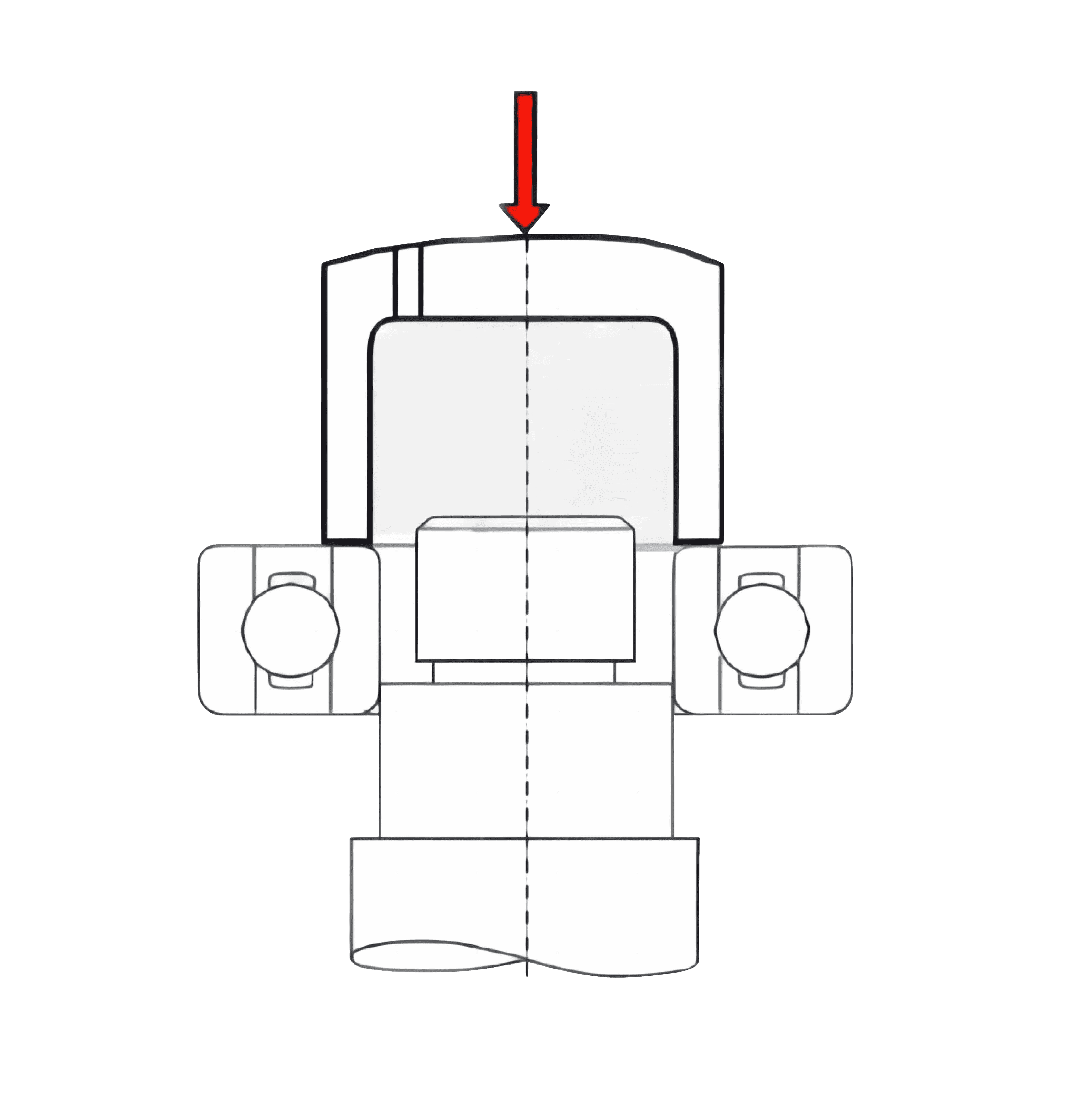
Bearing Press Fitting Procedure - Inner Ring
Preparation and Positioning:
- Initiate by positioning a specialized tool on the inner ring of the bearing, making sure it does not contact the raceway or the bushings to avoid potential damage.
- For smooth insertion, it's advisable to apply a light coating of oil on the shaft where the bearing will be seated, sometimes utilizing dry ice to shrink the shaft slightly for easier fitting.
Press-Fitting for Small Bearings:
Employ an arbor press to slowly push the bearing onto the shaft until the inner ring aligns flush with the shaft's shoulder. This method is ideal for small bearings with minimally tight fits and is often used during bearing replacement.
Handling Larger Bearings:
- For bearings with tight interference fits or larger dimensions, avoid manual methods like hammering. If a hammer must be used for smaller bearings, ensure it impacts a mechanical component resting on the inner ring.
- In situations requiring both the inner and outer rings to fit tightly, employ tools that can simultaneously press against both rings. This might necessitate using a screw or hydraulic press for adequate force application.
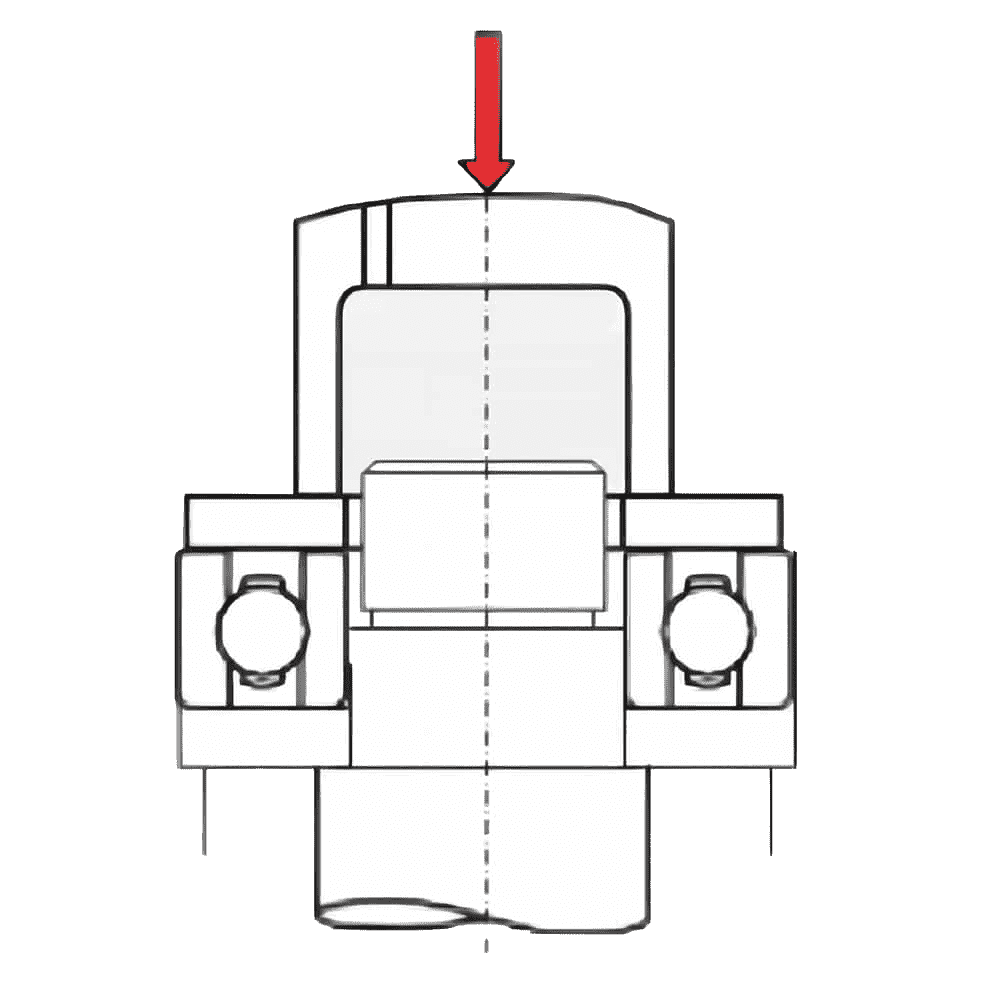
Diagram of Simultaneous Press Fitting Procedure for Bearings
Dealing with Non-separable and Separable Bearings:
- Non-separable bearings, such as deep groove ball bearings, demand a careful approach where tools are used on both rings for a simultaneous fit.
- Separable bearings like tapered roller bearings and cylindrical roller bearings allow for piece-by-piece installation. It’s critical to align these components accurately to avoid any assembly damage.
Specifics for Snug Fit:
To achieve a tight fit between the bearing rings and their respective mounting surfaces (shaft and housing), ensure that the mounting sleeve used can press both the inner and outer ring ends simultaneously. This ensures a uniform force distribution and prevents damage to the bearing surfaces, particularly important in gearboxes and electric motors.
Press fitting for Cylindrical Bore Bearings:
- Use of Press: The most common and preferred technique where a hydraulic or mechanical press applies even pressure to install the bearing.

- Use of Nut and Bolt: Applied when precise placement is needed; the bearing is secured by threading a nut and bolt through a bore in the shaft end.
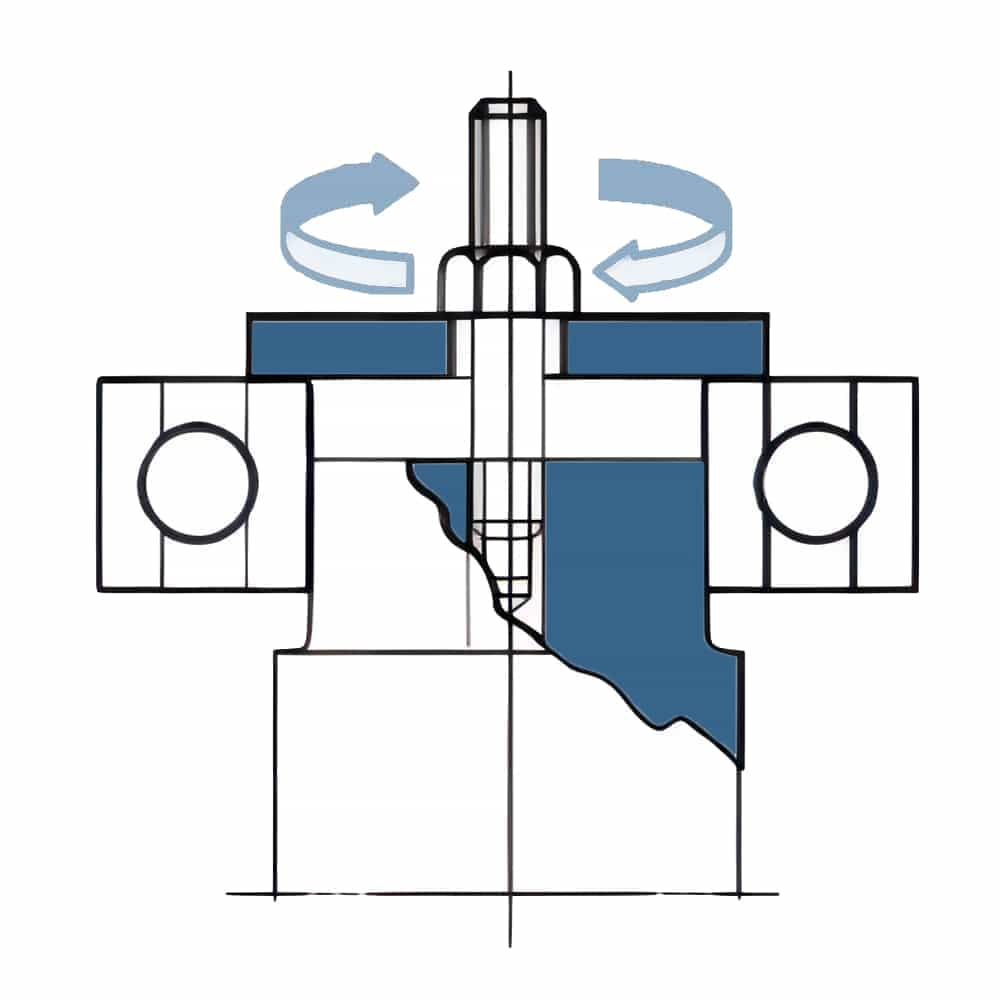
- Use of Hammer: Recommended only as a last resort when no other tools are available, using careful, direct impact to seat the bearing.

Assembly Casing Usage:
When the outer ring requires a tight fit, press the bearing into its housing first, utilizing an assembly casing with a slightly smaller diameter than the housing hole. For the inner ring, use a soft metal casing (such as copper or mild steel) to cushion and protect the end face during the press-fitting process.
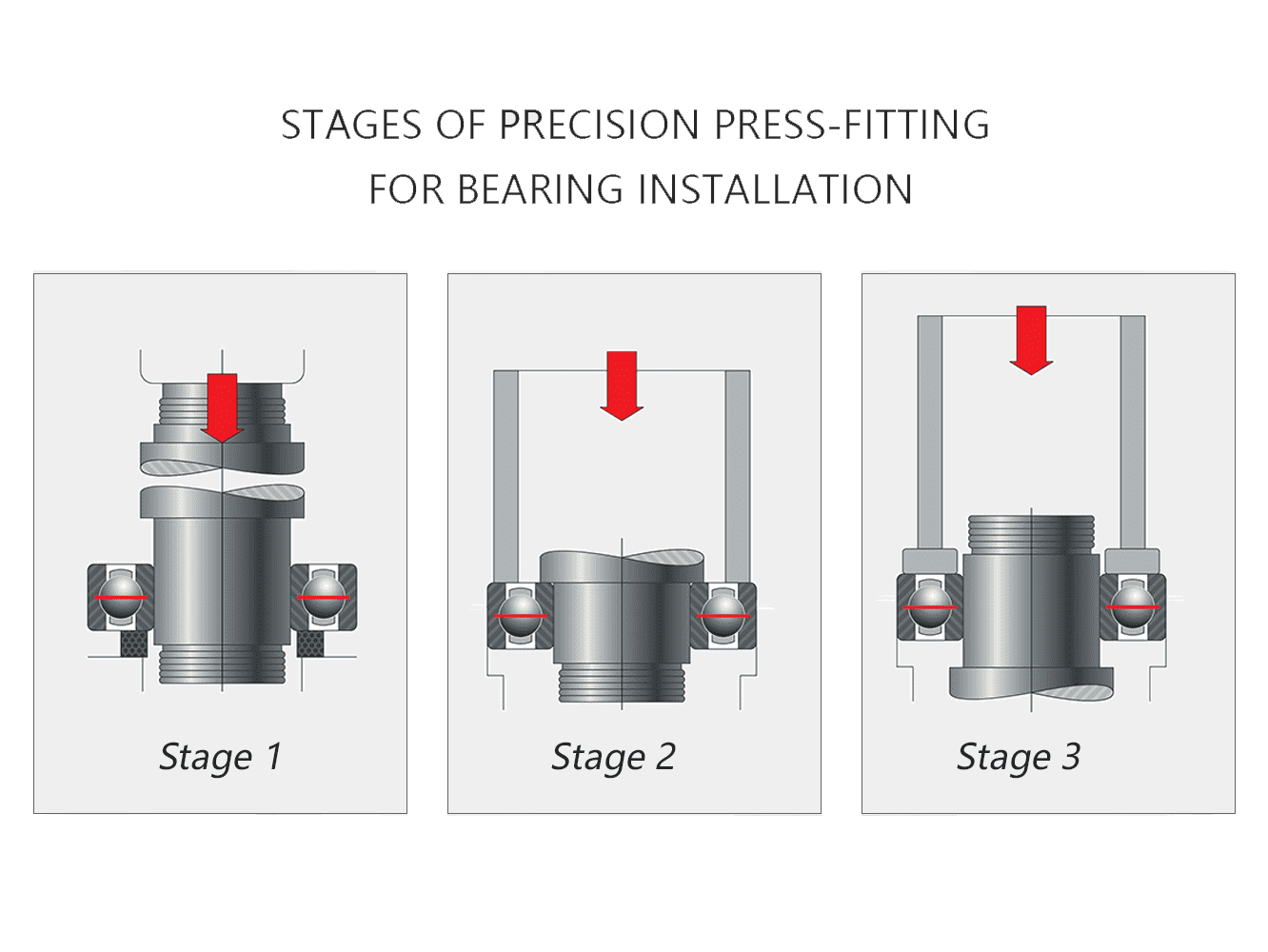
Stages of Precision Press-Fitting for Bearing Installation
Shrink Fit Method
Shrink fitting is a favored method for mounting large bearings without excessive force, using heat to expand the bearing before installation.
Precautions for Shrink Fits:
- Do not exceed 120°C when heating the bearings.
- Place bearings on a wire net or suspend in oil to avoid contact with the tank bottom.
- Heat bearings 20-30°C above the required minimum mounting temperature to compensate for cooling during the fitting process.
Post-Installation:
Expect bearings to contract both axially and radially as they cool. Ensure they are pressed against the shaft shoulder to prevent any gaps. Use appropriate locating techniques for accurate placement.
Thermal Techniques and Modern Methods
Advancements in bearing installation, such as induction heaters, offer efficient and precise methods for fitting bearings. These techniques underscore the significance of temperature control during the installation process.
- Induction Heating: A modern approach where an electromagnetic field uniformly heats the bearing, avoiding direct contact and potential damage. This method is particularly effective for shrink fitting, allowing for controlled expansion and ensuring a precise fit.
- Importance of Temperature Control: Proper temperature management ensures the bearing does not overheat, which can alter its properties and performance. Temperature control is essential for both expanding the bearing for fitting and preventing damage during the process.
Using these methods, especially induction heating, aligns with professional standards for "how to install a bearing," ensuring that bearings are installed under optimal conditions to extend their service life and enhance machinery performance.
Removal Techniques: Best Practices
In the realm of industrial maintenance, knowing how to remove a bearing is as critical as installation. The choice of removal method must consider the bearing's size, location, and the machinery's design. Understanding the terms associated with bearing removal is crucial for proper disassembly and maintenance.
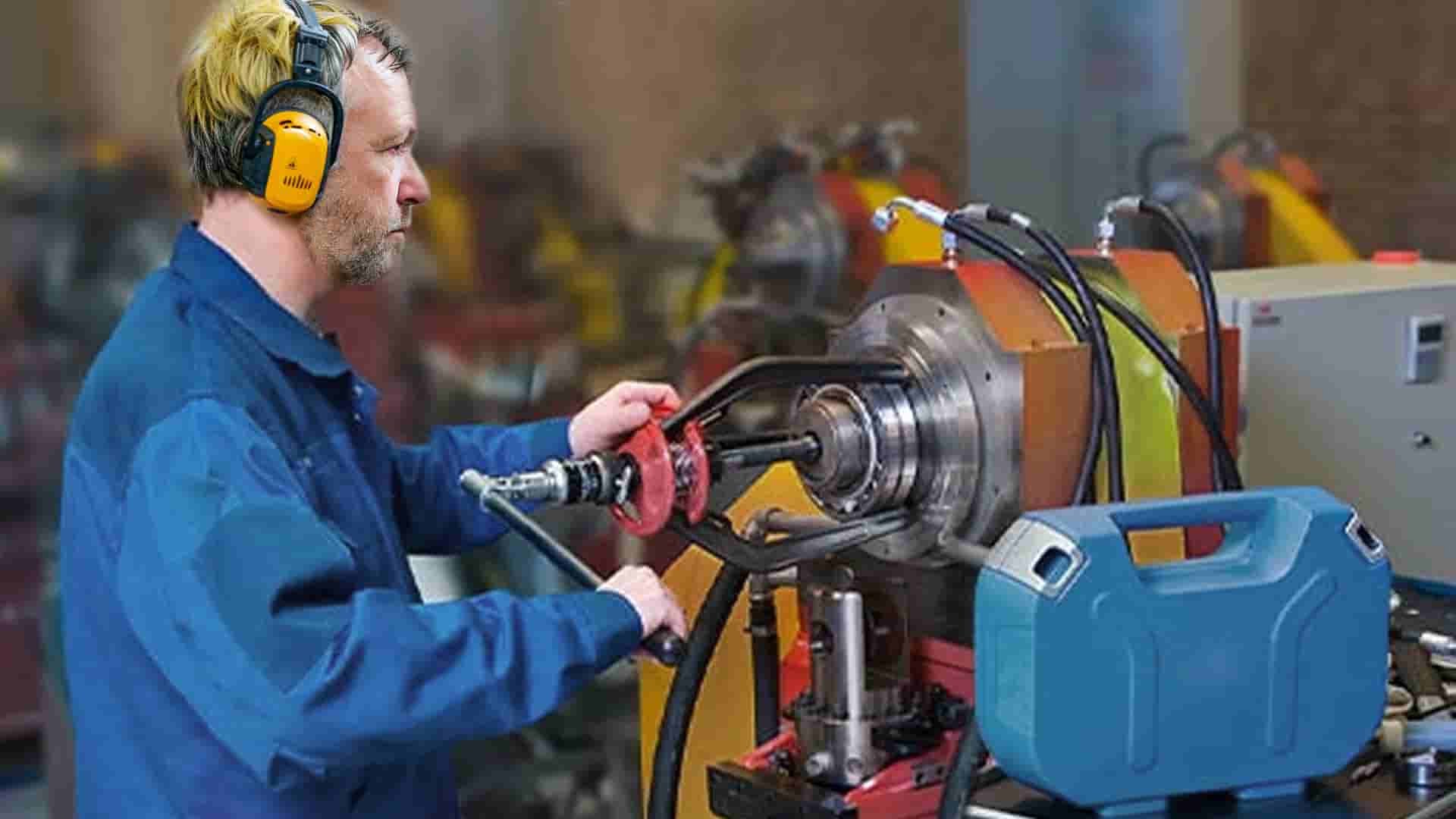
How to Remove a Bearing
Bearing Puller Method
The most reliable method for various sizes and types of bearings, including ball bearings and roller bearings. It ensures even force distribution, minimizing the risk of damage.
- Mechanism: Utilizes jaws tailored to encase the bearing, facilitating its extraction using a bearing press or a bearing splitter or a mechanical puller.
- Types: Available in mechanical and hydraulic variants, ensuring suitability from automotive to heavy industrial applications.
Advantages:
- Minimal Machinery Risk: Reduces potential damage during removal.
- Versatility: Suitable for various bearing sizes and designs, including large bearings.
- Limitation: Not ideal for heavy bearings that are difficult to lift or wheel bearings where special tools are required for dismounting.
Hydraulic Methods
- Options Available: Choose between employing a hydraulic nut, pump, or oil injector for the task, complemented by specialized tools such as separators or bearing splitters.
- Ideal Situations: Perfectly suited for the extraction of large, cumbersome bearings that are too robust for conventional puller methods.
Key Advantages:
- Precision and Safety: These methods allow for a more controlled and accurate removal process, significantly reducing the likelihood of causing damage to the motor shaft or housing and minimizing risks of personal injury.
- Reduced Physical Effort: The use of hydraulics substantially lowers the need for manual exertion, making it considerably easier to remove larger bearings efficiently. This advantage is particularly valuable in industrial settings where time and safety are of the essence.
Hot Oil and Steam
- Procedure: Utilizes hot oil or steam to uniformly heat bearings, causing them to expand and facilitating their removal from the end of the shaft.
- Efficacy: Proven to efficiently enlarge bearings for smoother extraction, often making it a go-to method for stubborn press-fit fittings.
Considerations and Risks:
- Safety Concerns: The use of high temperatures poses significant hazards, including the risk of severe burns to operators. This method necessitates stringent safety protocols to mitigate dangers.
- Potential for Collateral Damage: The intense heat required for this process not only threatens the immediate working environment but also carries a substantial risk of inflicting thermal stress and consequential damage on adjacent components, potentially leading to escalated maintenance or replacement expenses.
- Professional Guidance: Given the inherent risks and potential for equipment damage associated with hot oil and steam removal techniques, they are generally discouraged. Alternatives that ensure both operator safety and the integrity of machinery should be prioritized.
Brute Force
- Method: Employs tools like hammers and gouges to forcibly dislodge bearings from shafts or housings.
- Usage: Typically a last-resort method when other removal strategies fail due to tight securement of bearings.
Risks:
- Equipment Damage: The excessive force can cause harm to the outer race, housing, and nearby components, leading to possible extensive repairs.
- Safety Concerns: The method increases the risk of injuries from tools slipping or mishandling.
- Recommendation: Given the potential for damage and injury, it's advised to seek alternative, less forceful removal techniques to ensure both personnel safety and machinery integrity.
For further advice on how to remove bearings, click here, please!
Avoiding Common Pitfalls
Common mistakes during the removal process include:
- Inappropriate Tools: Leads to bearing and machinery damage. Always match the tool to the bearing size and type, considering the tolerances and avoiding any burrs that could damage the new bearing during installation.
- Safety Negligence: Skipping protective gear risks injuries. Ensure all safety protocols are followed.
- Overlooking Post-removal Inspection: Missing the opportunity to diagnose potential machinery issues by failing to inspect the removed bearing.
Adhering to best practices in bearing removal not only ensures the safety of personnel but also protects machinery from unnecessary harm, maintaining operational efficiency and reducing downtime.
Essential Tips for Safe Bearing Removal
- Follow Manufacturer Guidelines: Adhere to the manufacturer's instructions for bearing removal to avoid mistakes.
- Seek Professional Training: Prior to removal, especially for first-timers, training with an expert is crucial to ensure safety and prevent equipment damage.
- Use Appropriate Tools: For puller usage, ensure the jaws match the bearing's size and shape. With hydraulics, employ a cylinder designed for bearing removal.
- Avoid Risky Methods: Steer clear of using hot oil or steam due to safety hazards and potential damage to machinery.
- Consult Experts: If uncertain about the removal method for your equipment, seek advice from a maintenance specialist before proceeding.
Conclusion
In summary, mastering the techniques of 'how to install a bearing' and 'how to remove a bearing' is crucial for the optimal performance and extended life of your equipment. Always prioritize precision and safety, and for further insights, stay tuned to our blog.
Keep Learning








